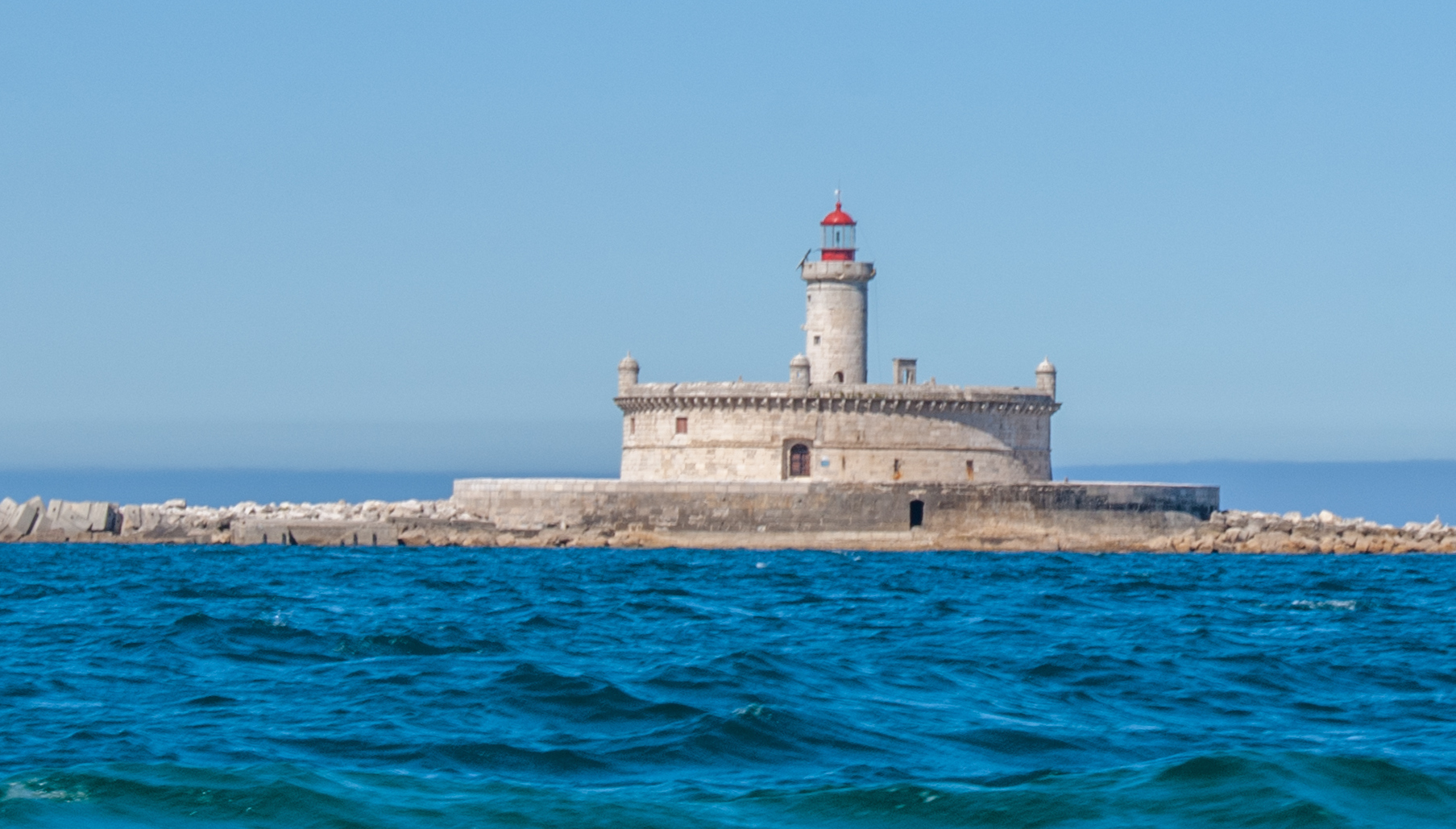|
Fort Of São Lourenço Do Bugio
The Fort of São Lourenço do Bugio, also known as the fort of São Lourenço da Cabeça Seca (Saint Lawrence of the dry head) or simply Torre do Bugio (Bugio Tower), is located in the middle of the estuary of the river Tagus, near Lisbon in Portugal. With no further need for its military functions, it is presently a lighthouse. The fort's location is on a sandbank formed by the silting of the river mouth, the result of the meeting of the river's waters with those of the Atlantic Ocean. Being the only sandbar of the Tagus river with its surface above the tide throughout the year, it was given the name “dry head”. The derivation of the name “Bugio” (monkey) is uncertain but may be related to the French word for candle, “bougie”, due to the similarity of the fort's structure with a candle on a candlestick. Origins The idea of a fortification on the river Tagus to protect the maritime access to Lisbon was first suggested by the architect Francisco de Holanda in the reign ... [...More Info...] [...Related Items...] OR: [Wikipedia] [Google] [Baidu] |
Tagus
The Tagus ( ; ; ) is the longest river in the Iberian Peninsula. The river rises in the Montes Universales between Cuenca and Teruel, in mid-eastern Spain, flows , generally westward, and empties into the Atlantic Ocean in Lisbon. Name The river's Latin name is ''Tagus''. While the etymology is unclear, the most probable etymological origin for the hydronym ''Tagus'' is Indo-European *(s)tag- ('to drip'). Geography Source The Tagus River originates at an elevation of 1,593 meters above sea level in a place known as Fuente García, within the municipality of Frías de Albarracín in Teruel, Spain. Its source is located between the Muela de San Juan (1,830 m) and Cerro de San Felipe (1,839 m), in the Sierra de Albarracín, which belongs to the Montes Universales in the western branch of the Iberian System. Course The river flows through Spain for , passing through four autonomous communities (Aragón, Castilla-La Mancha, Madrid, and Extremadura) and a total of six ... [...More Info...] [...Related Items...] OR: [Wikipedia] [Google] [Baidu] |
Philip II Of Spain
Philip II (21 May 152713 September 1598), sometimes known in Spain as Philip the Prudent (), was King of Spain from 1556, King of Portugal from 1580, and King of Naples and List of Sicilian monarchs, Sicily from 1554 until his death in 1598. He was also ''jure uxoris'' King of England and List of Irish monarchs, Ireland from Wedding of Mary I of England and Philip of Spain, his marriage to Queen Mary I in 1554 until her death in 1558. Further, he was Duke of Milan from 1540. From 1555, he was Lord of the Seventeen Provinces of the Habsburg Netherlands, Netherlands. The son of Emperor Charles V and Isabella of Portugal, Holy Roman Empress, Isabella of Portugal, Philip inherited his father's Spanish Empire in 1556, and succeeded to the Kingdom of Portugal, Portuguese throne in 1580 following a dynastic crisis. The Spanish conquests Spanish conquest of the Inca Empire, of the Inca Empire and of the Philippines, named in his honor by Ruy López de Villalobos, were completed during h ... [...More Info...] [...Related Items...] OR: [Wikipedia] [Google] [Baidu] |
Properties Of Public Interest In Portugal
Property is the ownership of land, resources, improvements or other tangible objects, or intellectual property. Property may also refer to: Philosophy and science * Property (philosophy), in philosophy and logic, an abstraction characterizing an object *Material properties, properties by which the benefits of one material versus another can be assessed *Chemical property, a material's properties that becomes evident during a chemical reaction *Physical property, any property that is measurable whose value describes a state of a physical system *Thermodynamic properties, in thermodynamics and materials science, intensive and extensive physical properties of substances *Mathematical property, a property is any characteristic that applies to a given set *Semantic property *Mental property, a property of the mind studied by many sciences and parasciences Computer science * Property (programming), a type of class member in object-oriented programming * .properties, a Java Properties ... [...More Info...] [...Related Items...] OR: [Wikipedia] [Google] [Baidu] |
Buildings And Structures In Oeiras, Portugal
A building or edifice is an enclosed structure with a roof, walls and windows, usually standing permanently in one place, such as a house or factory. Buildings come in a variety of sizes, shapes, and functions, and have been adapted throughout history for numerous factors, from building materials available, to weather conditions, land prices, ground conditions, specific uses, prestige, and aesthetic reasons. To better understand the concept, see ''Nonbuilding structure'' for contrast. Buildings serve several societal needs – occupancy, primarily as shelter from weather, security, living space, privacy, to store belongings, and to comfortably live and work. A building as a shelter represents a physical separation of the human habitat (a place of comfort and safety) from the ''outside'' (a place that may be harsh and harmful at times). buildings have been objects or canvasses of much artistic expression. In recent years, interest in sustainable planning and building practi ... [...More Info...] [...Related Items...] OR: [Wikipedia] [Google] [Baidu] |


